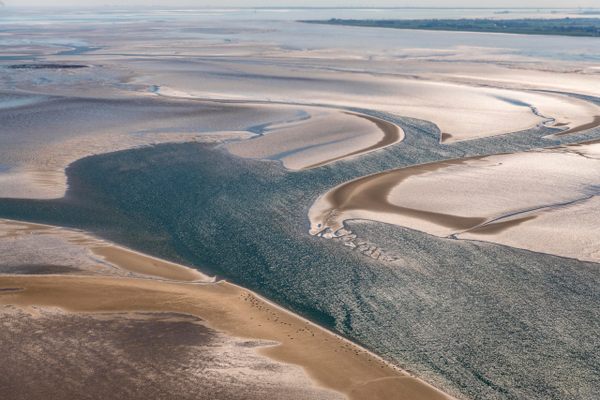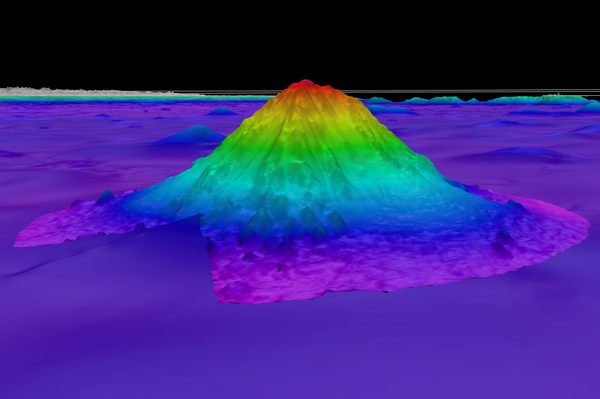Deep in the Ocean’s Trenches, The Legacy of Nuclear Testing Lives
The discovery of “bomb carbon” miles below the surface shows how deep human impact goes.

As it turns out, indiscriminately detonating nuclear bombs across the globe, some 500 times or more stronger than those dropped during World War II, can have a pretty profound effect on the world. Evidence of Cold War nuclear testing has made its way to the deepest reaches of the Pacific Ocean.
Scientists recently discovered evidence of radioactive carbon, also known as “bomb carbon,” in the tissues of crustaceans—up to seven miles below the surface, in iconic trenches such as the Mariana, Mussau, and New Britain, according to a new study published in Geophysical Research Letters.
Bomb carbon, known as carbon-14, can form naturally in the atmosphere and within some organisms, but during the nuclear arms race its atmospheric levels skyrocketed. These particles descended into the ocean, where they were absorbed by marine animals near the surface. Decaying remains of those surface animals sank to the bottom, where crustaceans called amphipods then consumed them, incorporating the bomb carbon into their own bodies.

Perhaps even more significant than the discovery of bomb carbon itself is how quickly the isotope reached the bottom. According to researchers, water containing carbon-14 can take centuries to circulate throughout the ocean, but the food web drastically accelerated the process. “There’s a very strong interaction between the surface and the bottom, in terms of biologic systems, and human activities can affect the biosystems even down to 11,000 meters,” said Weidong Sun, a coauthor of the study, via press release, “so we need to be careful about our future behaviors.”
These deep-sea crustaceans are longer-lived than their shallow-water relatives, which contributes to the accumulation of carbon-14 in their tissues. This can become problematic, according to a statement by Ning Wang, a geochemist at the Chinese Academy of Sciences and lead author of the study. “Besides the fact that material mostly comes from the surface, the age-related bioaccumulation also increases these pollutant concentrations, bringing more threat to these most remote ecosystems.” Researchers hope to gain a better understanding of the extent of human pollution in the most inaccessible locations—even if there’s little we can do about it now.







Follow us on Twitter to get the latest on the world's hidden wonders.
Like us on Facebook to get the latest on the world's hidden wonders.
Follow us on Twitter Like us on Facebook